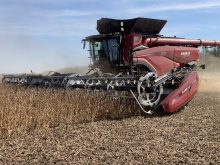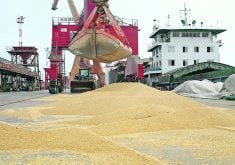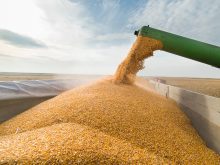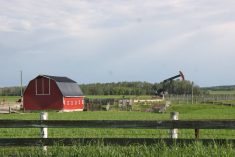The U.S. winter wheat crop is off to a worse start than last year, according to farm groups in the southern Plains.
“We literally have had no rain in a year,” said Steelee Fischbacher, communications director with Texas Wheat Producers.
“This is actually the worst oneyear drought on record for Texas, so we’re in a place that we’ve never been before.”
The U.S. Drought Monitor map shows that all of Texas, most of Oklahoma and the southern half of Kansas were experiencing exceptional drought as of Oct. 4.
Read Also

Bunge’s crop mix is changing
Bunge has predominantly been a soybean processing firm, but that’s about to change after the merger with Viterra with softseed processing and grain merchandising gaining ground.
Fischbacher said farmers will seed a crop for insurance purposes, but many growers know they’re heading for a wreck.
Growers in Texas had seeded 25 percent of the crop as of Oct. 2, half the normal amount. Emergence is spotty .
“You can already tell that it’s not going to be a good crop,” said Fischbacher.
The La Nina drought gripping the southern Plains has been around since shortly after planting last year. It is the reason U.S. hard red winter wheat production fell 23 percent in 2011-12 despite a four percent increase in seeded acres.
But growers were at least planting into moisture last year. This year it’s dust and cracks.
“It’s going to significantly impact the (yield) potential for the crop,” said Fischbacher.
Kansas is the biggest winter wheat producer in the United States, accounting for 22 percent of the crop, followed by Texas at 13 percent and Oklahoma at 12.5 percent. All three states are in the epicentre of the drought.
Thirty percent of the winter wheat crop had been planted in Oklahoma as of Oct. 2, compared to the previous five-year average of 49 percent.
“There are parts in southwest Oklahoma that went over 200 days with less than a quarter inch (six millimetres) of rain,” said Mike Schulte, executive director of the Oklahoma Wheat Commission.
“That is a long time to go without water.”
Growers never gave up hope that the rain would return, but they are beginning to despair.
“As we go into this planting season, there are major concerns that if we go into another La Nina pattern, that we definitely are going to have some severe problems on our hands,” said Schulte.
That’s what forecasters are expecting. Last week, the National Oceanic and Atmospheric Administration said the La Nina weather pattern would strengthen and continue into next spring.
Bill Spiegel, director of communications with Kansas Wheat, doesn’t put too much stock in what impact La Nina will have. He’s also more optimistic about production prospects in his state than his counterparts in Texas and Oklahoma.
“If we get some rain this fall we like our chances,” he said.
Growers in the state had seeded 43 percent of the winter wheat crop as of Oct. 2, about average. Spiegel expects a 10 percent increase in winter wheat acres in Kansas.
“We’ve got a lot of acres in wheat this fall that we haven’t had the last couple of years,” he said.
Farmers in northern Kansas have some subsoil moisture to seed into, but conditions are grim in the south.
“It isn’t as bad as what we’ve seen on the nightly news in Texas with big old cracks in the soil that you could drop a log chain in, but it’s just so dry,” said Spiegel.
The good news for farmers in all three states is that weather forecasters were calling for widespread weekend rains as of Oct. 7.















